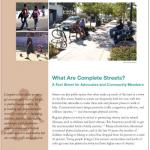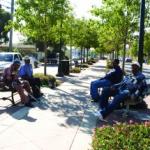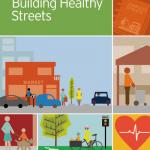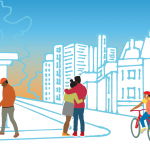Complete Streets Policies at the State Level
Model state resolution and model state legislation
Across America, a movement is afoot to build Complete Streets — streets that allow people to get around safely, even if they’re not traveling by car.
Unlike conventional street designs, which prioritize car traffic over other types of transit, Complete Streets promote mobility and physical activity for people of all ages, abilities, and income levels. Complete Streets facilitate many forms of transportation, including walking, bicycling, taking public transit, and driving. More than 1,400 US cities, regions, and states have implemented Complete Streets policies.
Complete Streets is a proven policy approach that creates healthier, more equitable communities. Health benefits include reduced traffic and fewer collisions, more active living and exercise opportunities, and better air quality for surrounding neighborhoods. Complete Streets also increase economic opportunity by improving access to local institutions and businesses through alternate modes of transportation. And Complete Streets policies can help address infrastructure and investment disparities in underserved communities.
By adopting a Complete Streets policy, a state can formalize its commitment to providing its constituents with the health, equity, and economic benefits associated with Complete Streets. In addition, pursuing policy change is an opportunity to examine and revamp current planning practices such as inter-agency collaboration, community engagement processes, and evaluation requirements.
ChangeLab Solutions created these Complete Streets tools for state-level policymakers who are looking to improve health and equity by passing a resolution or enacting legislation.



